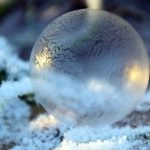Tips, Tricks and Lesson Ideas for Learning Outdoors in Winter
Winter can be a wonderful time to embrace the outdoors and learn in a unique and engaging way. Here are some tips, tricks, and lesson ideas for making the most of outdoor learning during the winter season:
1. Dress appropriately: The key to enjoying outdoor learning in winter is to dress for the weather. Layer up with thermal clothing, wear a warm hat, gloves, and scarf, and ensure you have waterproof and insulated boots. Don’t forget to bring extra layers in case of temperature fluctuations.
2. Safety first: Before heading outdoors, make sure to prioritize safety. Check weather forecasts, assess the conditions of the outdoor space, and ensure there are no potential hazards. Always have a first aid kit handy.
3. Explore seasonal changes: Take advantage of the unique learning opportunities that winter brings. Encourage students to observe and document the changes in nature, such as bare trees, animal behavior, and weather patterns. Discuss how these changes impact the ecosystem.
4. Engage in winter-themed experiments: Conduct science experiments that align with the winter season. For example, explore the freezing point of water, investigate how different materials insulate against the cold, or study the formation of snowflakes.
5. Incorporate winter sports and activities: Take advantage of winter sports and activities to promote physical fitness and team building. Organize activities such as ice skating, snowshoeing, sledding, or building snow forts. These activities provide hands-on learning experiences while embracing the winter atmosphere.
6. Wildlife tracking: Teach students how to identify animal tracks in the snow. Take them on a guided nature walk and encourage them to observe and document the tracks they find. Discuss the behavior and adaptations of local wildlife during winter.
7. Winter-themed art projects: Foster creativity by involving students in winter-themed art projects. Create snowflake patterns using symmetry, make winter landscape paintings, or design and build winter bird feeders. These activities integrate art with science and outdoor exploration.
8. Conduct weather observations: Set up a weather station in your outdoor learning space. Teach students how to measure temperature, humidity, and wind speed. Encourage them to record daily observations and analyze weather patterns over time.
9. Environmental stewardship: Use outdoor winter activities as an opportunity to teach students about environmental stewardship. Discuss the importance of reducing waste, conserving energy, and protecting wildlife habitats during the winter season.
10. Reflect and share experiences: Conclude each outdoor learning session by providing time for reflection. Encourage students to share their observations, insights, and personal experiences. This reflection fosters a sense of connection to nature and reinforces the learning that occurred during the outdoor lesson.
By implementing these tips, tricks, and lesson ideas, educators can create meaningful and engaging learning experiences for students during the winter season. Embracing the outdoors in winter not only enhances academic learning but also promotes physical activity, connection to nature, and overall well-being.


